What is Rapid Application Development (RAD)? A Complete Guide for 2026
Date
Oct 25, 25
Reading Time
11 Minutes
Category
Custom development
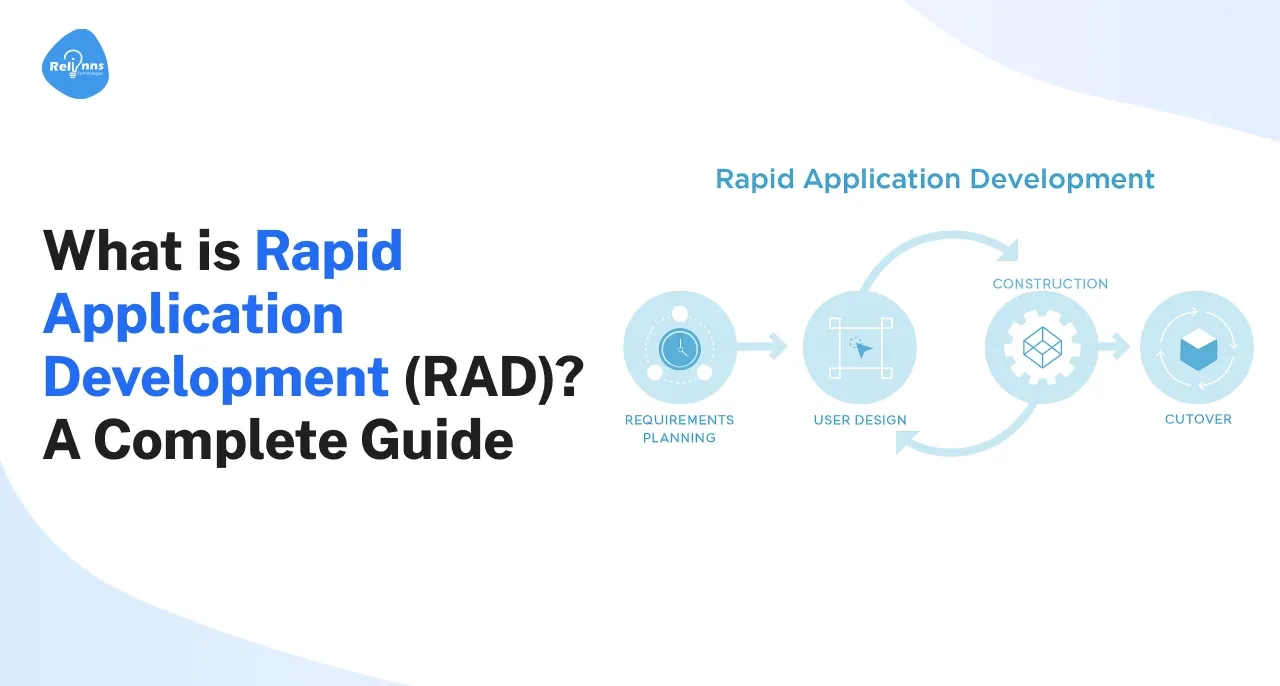
In 2026, nearly 30% of software projects fail to meet deadlines or user expectations due to slow planning and rigid development methods. Traditional approaches just can’t keep up with today’s software updates.
But Rapid Application Development (RAD) changes the game.
It focuses on speed, iterative prototyping, and immediate feedback, allowing businesses to deliver working applications faster while adapting to evolving requirements.
In this guide, we’ll break down what rapid application development is, explore its types, walk through the step-by-step process, and examine its benefits, disadvantages, and real-world applications.
By the end, you’ll understand how RAD can transform your development workflow and why it’s becoming essential for modern businesses.
Let’s get started.
What is Rapid Application Development (RAD)?
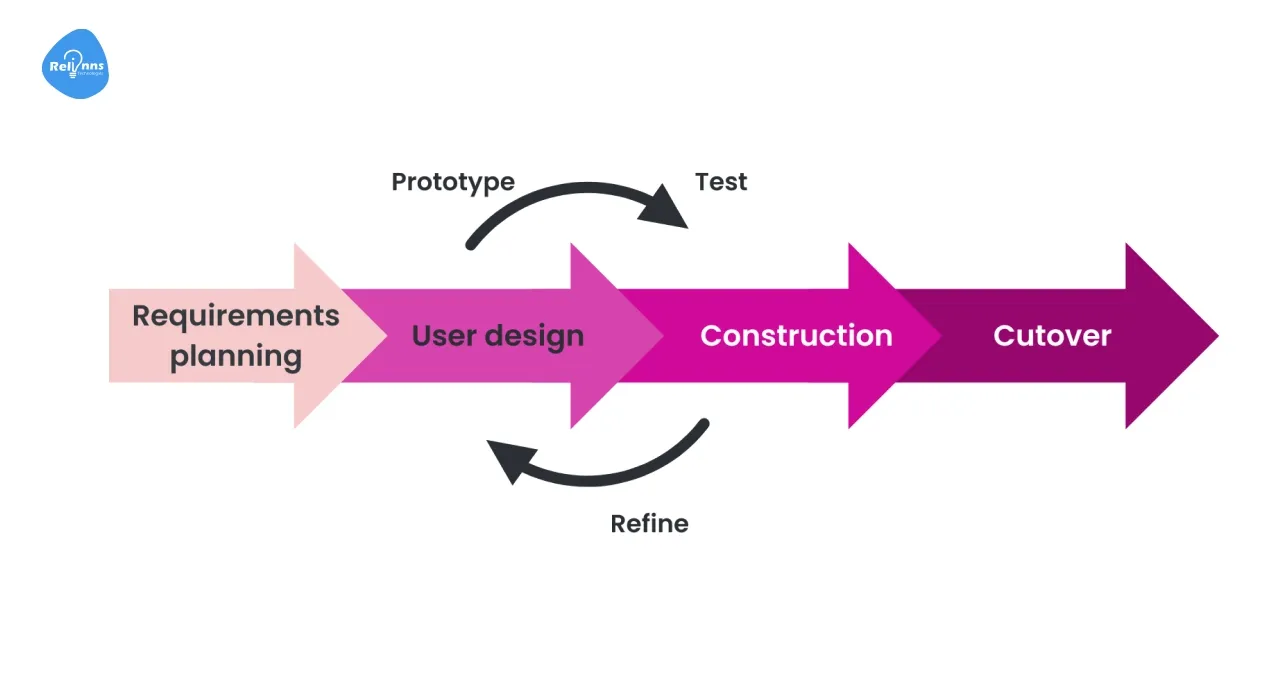
Rapid Application Development RAD is an agile methodology built around rapid prototyping and iterative delivery.
It delivers functional software quickly, refines it with real-world input, and is widely used for web rapid application development, mobile apps, and enterprise solutions. This helps teams meet changing business needs while shortening development cycles.
Key principles it includes:
- Delivering functional prototypes quickly for early user feedback.
- Continuously refining the product based on user input.
- Reducing development cycles while aligning closely with business needs.
This rapid application development model allows teams to adapt quickly, integrate tools, and ensure the final product meets evolving requirements efficiently.
Evolution and Historical Context
James Martin introduced RAD in the 1980s to overcome the slow, rigid Waterfall approach. Over time, it has absorbed practices from Agile, Extreme Programming, and modern low-code/no-code frameworks.
Today, the methodology applies not only to software but also to digital health platforms, enterprise solutions, and complex, rapid web application development projects.
Modern Rapid Application Development RAD methodology often integrates RAD server configuration and SDLC frameworks to streamline development and testing.
Why & When to Use Rapid Application Development?
Some projects can’t wait a month for delivery.
That’s why Rapid Application Development (RAD) was designed to provide speed, adaptability, and continuous user feedback. It’s ideal when requirements evolve, user input is critical, or quick validation of a prototype or MVP is needed.
Let’s break down when and why RAD works best.
Fast Time-to-Market
RAD excels in projects that demand quick delivery. By prioritizing iterative development and prototyping, teams can launch functional versions faster, respond to market changes, and gain a competitive edge.
User-Centric Projects
When end-user feedback brings success, RAD becomes invaluable. Frequent iterations and early prototypes allow real users to shape functionality, ensuring the final product meets actual needs.
Changing Requirements
Projects with evolving requirements benefit from RAD’s flexibility. Unlike rigid models, RAD adapts to updates in scope, features, or design, reducing the risk of rework or delays.
Prototype-Driven Development
RAD is perfect for proof-of-concept or MVP validation. Early prototypes demonstrate functionality, gather feedback, and help secure stakeholder buy-in before full-scale development.
Availability of Skilled Teams
Successful RAD implementation requires a team with the necessary skills and experience. A proficient team can leverage RAD tools and methodologies effectively, ensuring the quality and timeliness of the delivered product.
High-Quality User Interfaces
Projects that prioritize user interface design benefit from RAD's focus on prototyping and user feedback. This ensures that the final product is intuitive, user-friendly, and meets the design expectations.
Integration with Modern Tools
RAD integrates well with modern development tools, including low-code/no-code platforms, AI-driven development, and DevOps practices. These integrations enhance productivity, streamline workflows, and facilitate continuous delivery.
RAD is an agile methodology that emphasizes speed, flexibility, and user involvement.
So it's equally essential to consider the project's size, complexity, and the team's capabilities when deciding to implement RAD.
Approaches of Rapid Application Development
Rapid Application Development (RAD) is designed for speed and flexibility.
Its implementation can be understood through core approaches that define how software is built, refined, and delivered quickly.
Prototyping-Centric Rapid Application Development
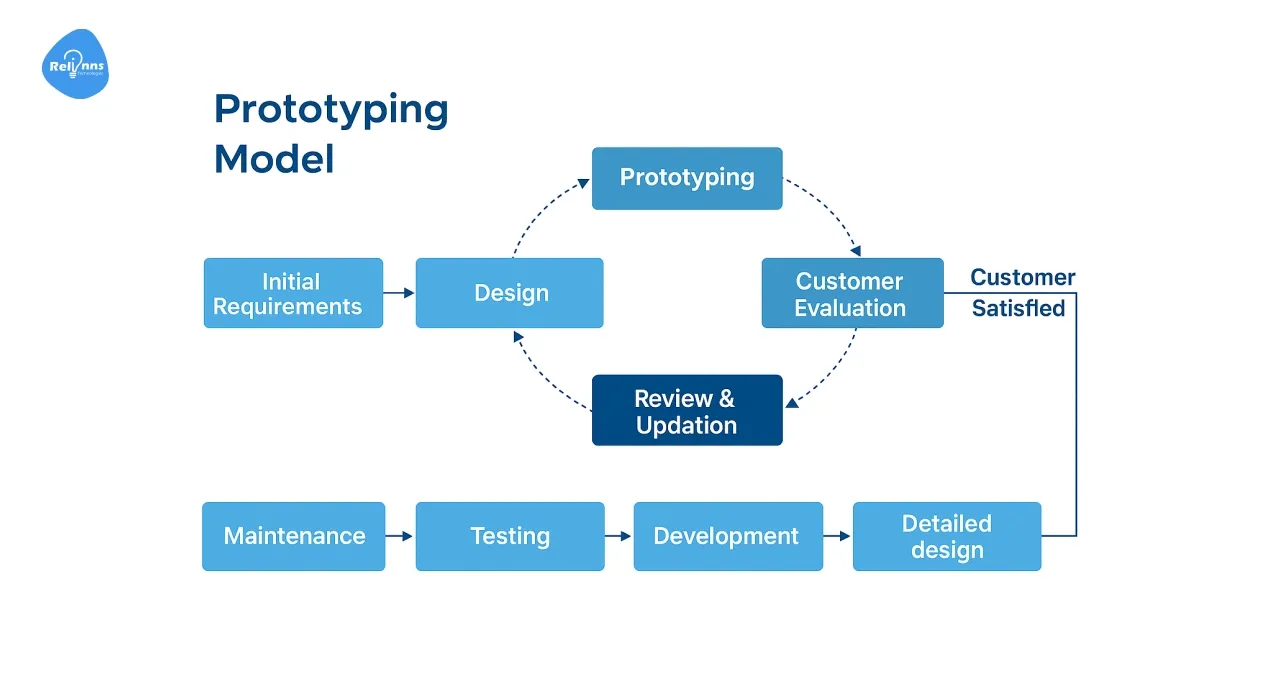
This approach focuses on creating functional prototypes quickly to gather real-time user feedback.
Prototypes allow for continuous adjustments, ensuring the software aligns with evolving business needs.
- Speeds up requirements validation
- Minimizes rework and error
- Supports rapid web application development
Iterative Rapid Application Development
Software is developed in short, repeated cycles, with each iteration refined based on user input. Iterative RAD aligns with Agile principles, making it ideal for projects with changing requirements.
- Enables flexible adjustments
- Improves user-centric project delivery
- Reduces time-to-market
Tool-Assisted Rapid Application Development
RAD leverages specialized tools to accelerate prototyping, coding, and deployment.
These include low-code/no-code platforms like Joget, Mendix & FlutterFlow, visual programming frameworks, and automation tools for rapid application development.
- Reduces manual coding effort
- Integrates with RAD Server Configuration and SDLC processes
- Supports both web and mobile RAD projects
Using prototyping, iterative cycles, and RAD tools helps teams deliver software faster while staying aligned with user needs.
By understanding the approaches, we can now break down the steps in Rapid Application Development.
Steps in Rapid Application Development
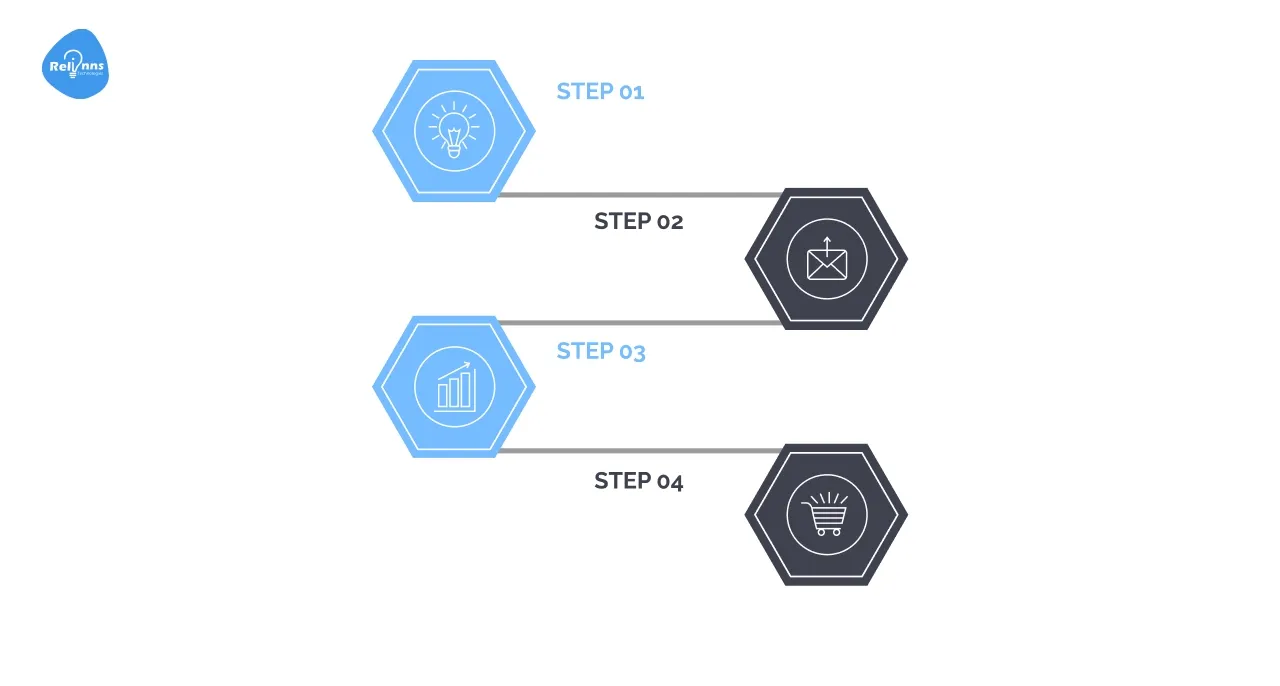
Rapid Application Development (RAD) is all about speed, flexibility, and learning as you go.
By carefully understanding each iterative step, teams can deliver functional applications faster and adapt quickly to changing requirements.
1. Requirements Planning
The first step is understanding what you really need. It is important to define objectives, scope, and constraints, but the plan should stay flexible.
The goal is to prioritize the features that matter most in the initial release, so you can start building quickly without losing focus.
2. Prototype Development
Next, you create functional prototypes. These are early versions of the application that let users interact and give feedback.
This hands-on approach ensures your rapid application development model stays aligned with real user expectations and helps catch issues early before full-scale development.
3. Construction
Now comes the core foundation. Developers work in iterative cycles, using reusable components or frameworks to speed things up.
The focus is on creating working software, not endless documentation. Leveraging rapid application development tools makes the process smoother and keeps the team moving fast.
4. Deployment
Finally, prototypes are transitioned into production. This includes final testing, system setup, and user training. Even after launch, feedback loops continue to refine features, ensuring the application evolves based on real-world use.
Following these steps keeps development fast, responsive, and user-focused while maximizing the benefits of rapid web application development.
Benefits of Rapid Application Development Model
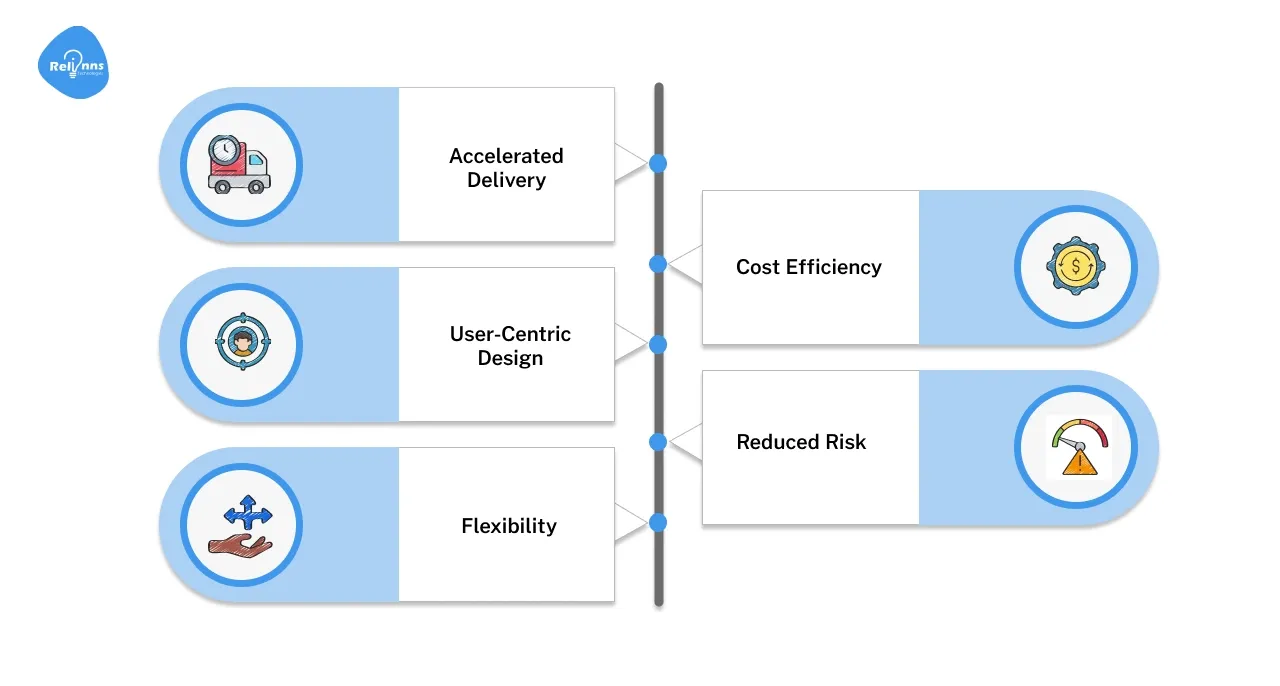
Rapid Application Development (RAD) isn’t just about speed; it delivers the right solutions efficiently.
Iterative prototypes and feedback help teams adapt quickly, reduce errors, and achieve benefits like faster delivery, cost savings, and user-focused design.
Let’s quickly go through the benefits of this model.
Accelerated Delivery
According to Gartner, organizations adopting RAD methodologies experience a 30% reduction in time-to-market compared to traditional approaches, enabling quicker product introductions.
User-Centric Design
Continuous end-user feedback ensures the software aligns with actual needs. A study by Octet Design found that products developed with a user-centered design approach can increase user satisfaction by up to 30%.
Flexibility
RAD's iterative approach allows teams to accommodate changing requirements mid-project without major disruptions, keeping development aligned with evolving business goals.
Cost Efficiency
Shorter development cycles mean fewer wasted resources. By catching issues early through iterative prototypes, organizations reduce overheads and maximize ROI, especially when leveraging tools for rapid application development.
Reduced Risk
Iterative testing and early prototype feedback help identify errors and gaps before full-scale deployment, lowering project risks and ensuring a higher-quality final product.
Leveraging the benefits of rapid application development makes the RAD methodology a wise choice for businesses seeking speed, efficiency, and user satisfaction.
5 Disadvantages of Rapid Application Development
Rapid Application Development (RAD) speeds up software delivery, but it’s not without challenges.
Knowing these helps teams plan better, avoid pitfalls, and deliver high-quality results efficiently.
Here are the key disadvantages explained below.
1. High Dependency on Skilled Developers
RAD requires experienced developers for rapid iterations and prototyping. Without them, projects can face delays, inconsistent quality, or features that don’t meet user needs.
2. Limited Scalability for Large Projects
RAD works best for small or modular applications. Large, complex systems may struggle without careful planning, causing integration or stability issues.
3. Risk of Incomplete Documentation
Fast prototyping often reduces documentation. This can make future maintenance, updates, and team handovers harder.
4. Cost Overruns in Extended Projects
Frequent changes and iterations can increase resource and tool usage, sometimes driving costs beyond initial expectations.
5. Reliance on Active User Feedback
Continuous end-user feedback is critical. Delayed or inconsistent input can stall progress or misalign features with real needs.
With careful planning, skilled teams, and structured feedback, these challenges can be managed effectively.
Applications of Rapid Application Development (RAD)
It’s important to know where RAD fits best to help teams pick the right tools, optimize workflows, and get real benefits from rapid prototyping and iterative development.
Here are some applications listed for you.
Web Applications
Startups and MVPs love RAD for fast web app launches. Teams can test ideas, gather feedback, and tweak prototypes, ensuring faster market entry without wasting time.
Mobile App Development
iOS and Android apps reach users sooner. The iterative cycles inherent in RAD let developers respond to user feedback and release updates quickly, keeping users engaged throughout the mobile app development process.
Enterprise Software
Enterprise systems like ERP, CRM, and other business tools gain a massive edge from RAD’s speed. Critical features can roll out faster, bypassing lengthy SDLC cycles, especially when teams grasp the strategic advantages of no-code and low-code over traditional development.
Prototyping and MVPs
Validate ideas before investing entirely. Rapid prototypes reduce risk, refine requirements, and deliver tangible results early to stakeholders.
Healthcare & Telemedicine Platforms
Build compliant, scalable platforms quickly. RAD helps integrate EHR systems, complex workflows, and remote patient monitoring efficiently.
RAD’s flexibility makes it suitable for nearly any project type, helping teams deliver high-quality software faster.
RAD vs Other Software Development Models
Understanding the key differences among development methods helps teams choose the best methodology for their project needs, whether it’s a fast MVP, a complex enterprise system, or a web rapid application development project.
Here’s a clear comparison to help you decide.
| Aspect | RAD | Waterfall Model | Agile |
| Approach | Iterative, prototype-driven | Linear, sequential | Iterative, incremental |
| Planning | Minimal upfront planning | Extensive upfront planning | Adaptive planning through sprints |
| Flexibility | High; accommodates changes easily | Low; changes are difficult and costly | High embraces changes based on feedback |
| Documentation | Minimal, focuses on working software | Comprehensive documentation at each phase | Just enough documentation to support development |
| Time-to-Market | Fast; initial prototypes quickly delivered | Slow; full product delivered at the end | Moderate; features delivered incrementally |
| Risk Management | Continuous feedback reduces risks | Risks identified late in the process | Regular reviews and adaptations mitigate risks |
| Best Suited For | Projects needing rapid development and frequent iterations | Projects with well-defined requirements and scope | Projects with evolving requirements and a need for flexibility |
Tools of Rapid Application Development
Proofs or examples of such cases often provide more credibility to the statement. So it’s essential to see how the model truly accelerates delivery while maintaining quality.
Some proven and live examples are discussed, showcasing how the Rapid Application Development Methodology works in real-world software development lifecycles (SDLCs).
Joget
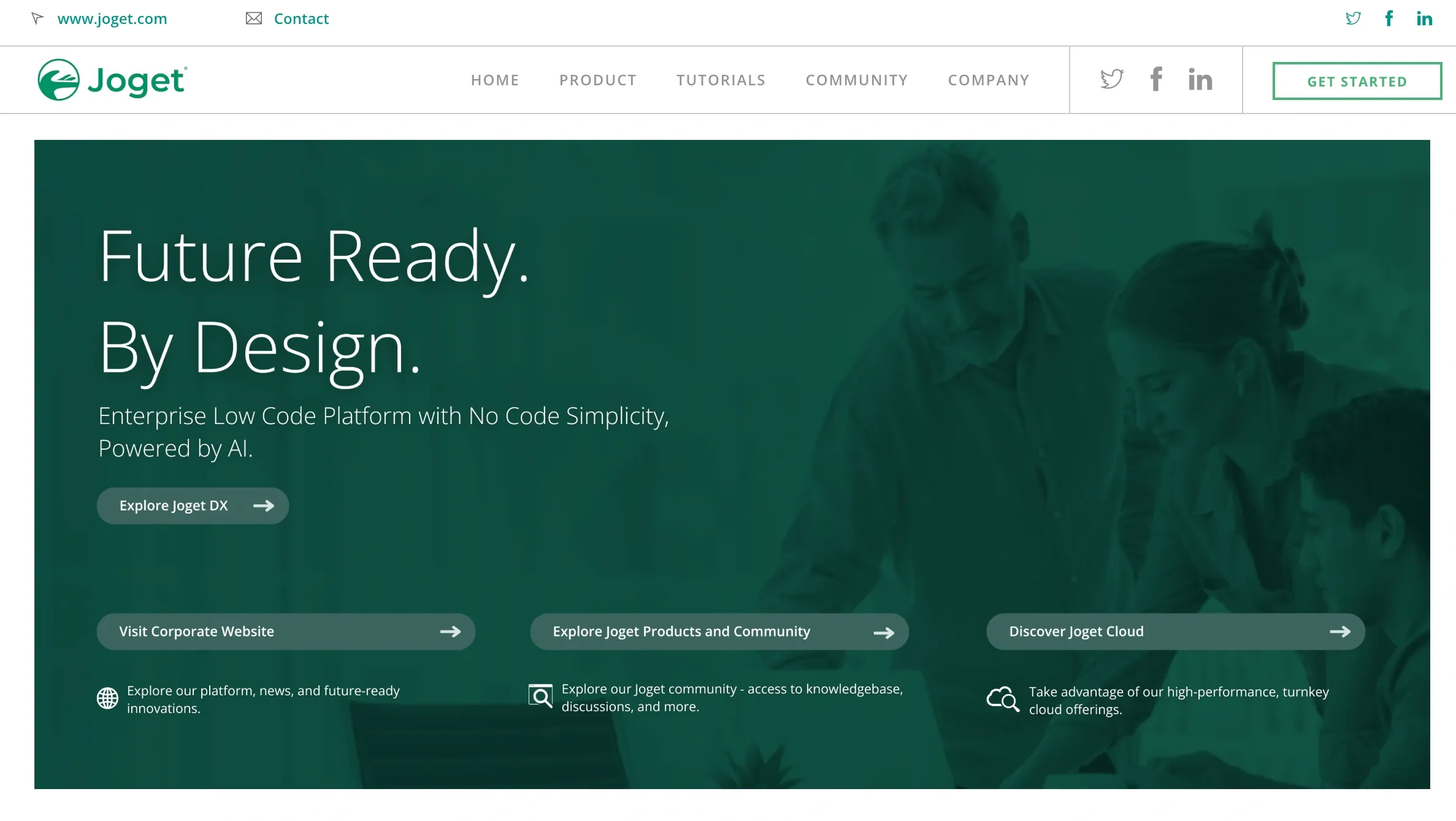
Joget has emerged as a powerful open-source low-code platform that blends workflow automation with rapid web application development. Its intuitive visual interface lets users design, deploy, and manage apps seamlessly without deep coding expertise.
- The RAD Framework within Joget supports process automation, form builders, and integrations that streamline complex business workflows.
- With its focus on speed and accessibility, Joget reflects the advantages of rapid application development and the benefits of Joget in helping organizations innovate faster while staying flexible.
Mendix
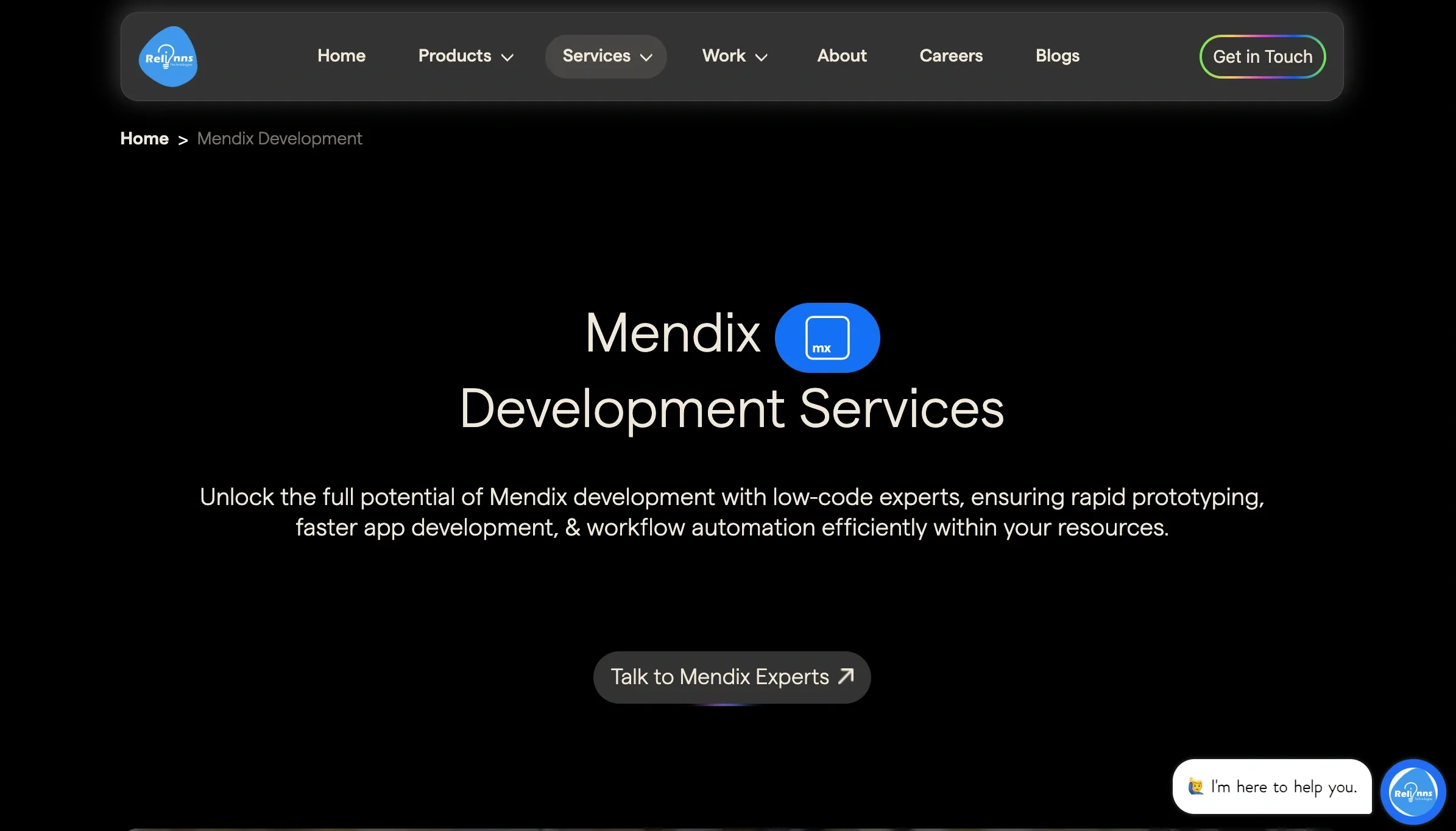
Mendix stands out as one of the most recognized low-code platforms, driving the future of Rapid Application Development. It redefines how teams build software by merging visual modeling, automation, and real-time collaboration.
- The Rapid Application Development model here emphasizes co-creation, continuous iteration, and reusable components to enhance agility and scalability.
- Mendix empowers businesses to build prototypes in days, showcasing the benefits of rapid application development through faster rollouts and better user alignment.
Microsoft Power Apps
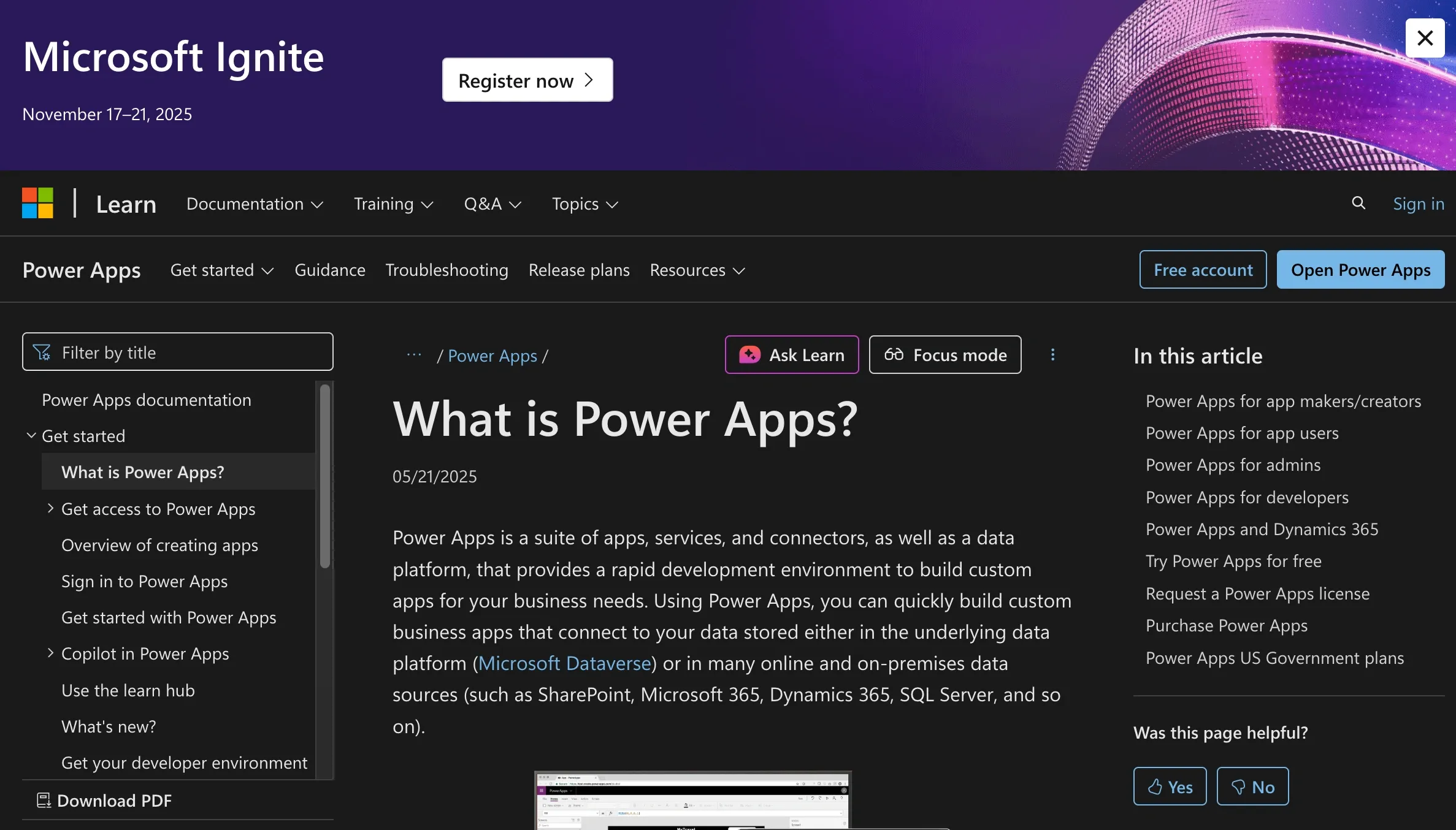
Microsoft defines Power Apps as a “rapid development environment to build custom apps” using a low-code approach. It enables users to connect data, automate workflows, and prototype apps visually, reducing dependency on traditional coding.
- Power Apps lets teams create, test, and iterate on apps across devices without complex backend setups.
- This approach aligns perfectly with the Rapid Application Development RAD model, focusing on iteration and user feedback.
OutSystems
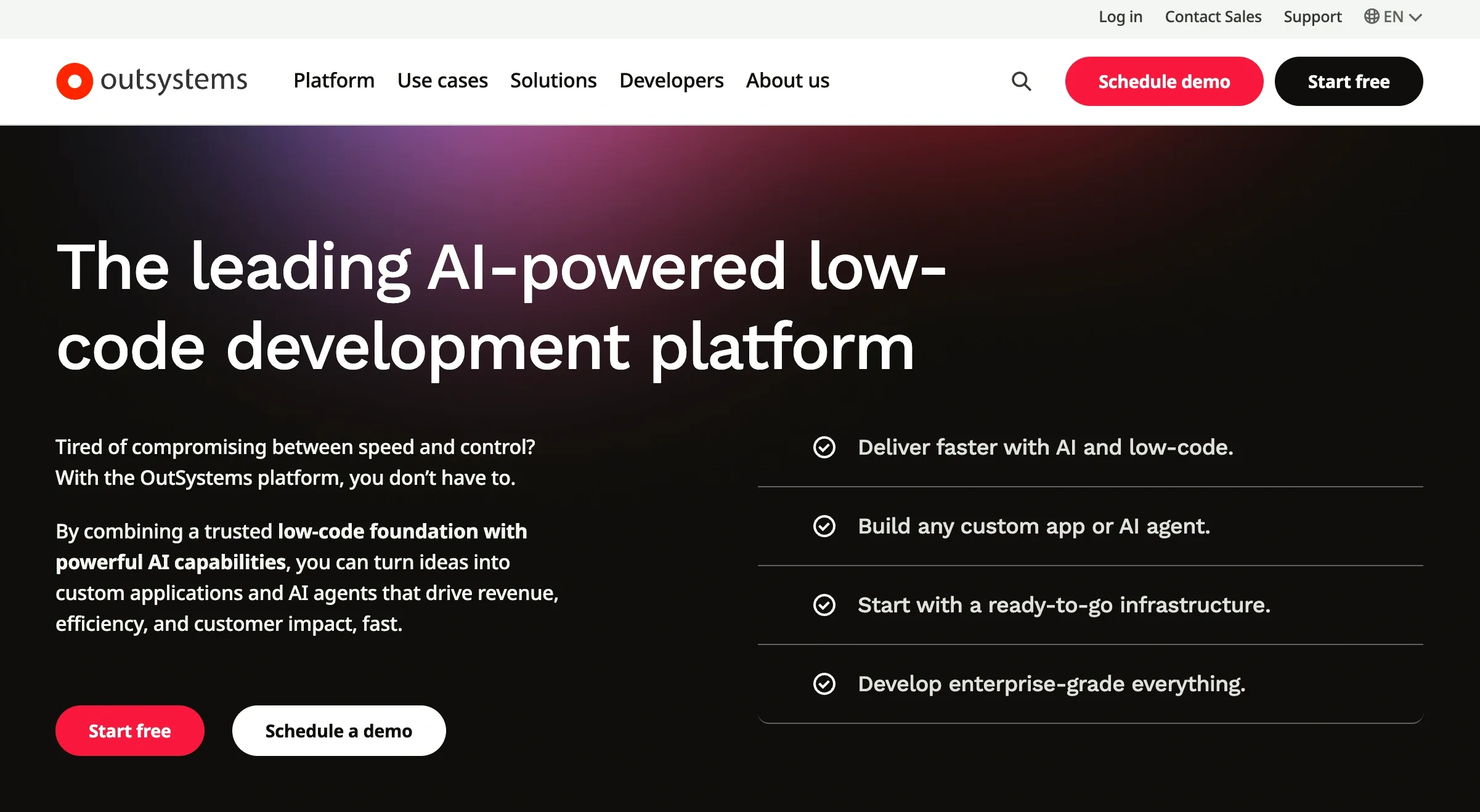
OutSystems provides a complete Rapid Application Development platform tailored for enterprise-scale solutions. It emphasizes rapid prototyping, visual design, and automated deployment, enabling teams to move from concept to a live product in weeks rather than months.
- The platform’s documentation highlights that OutSystems is built on the Rapid Application Development RAD methodology, supporting high-speed delivery while integrating into existing enterprise systems.
- Users benefit from built-in analytics, responsive UI frameworks, and tools for rapid application development, all of which accelerate delivery.
Together, these examples prove how Rapid Application Development transforms ideas into working applications at unprecedented speed.
Real-World Examples of Rapid Application Development
Examples make the Rapid Application Development Methodology more tangible.
The following examples of Rapid Application Development demonstrate how the RAD model streamlines the software development lifecycle (SDLC).
Harden
Harden is a progressive web app (PWA) built using R and shinyMobile, designed for ecological data collection. The project followed the Rapid Application Development (RAD) approach, focusing on quick prototyping and iterative testing.
Developers used PostgreSQL for the backend and Google Cloud Run for deployment, achieving full CRUD (Create, Read, Update, Delete) functionality in record time. The RAD methodology here allowed real-time user feedback and continuous refinement throughout the project lifecycle.
DHLink
DHLink, a microservice platform for digital health, showcases how RAD can accelerate data-driven app development. The framework enables developers to reuse prebuilt components for secure, real-time healthcare data sharing, significantly reducing development time.
By reusing services and focusing on modularity, DHLink exemplifies the advantages of Rapid Application Development, helping healthcare innovators deploy solutions faster without sacrificing data security or quality.
TIGO Consulting
TIGO Consulting used the Rapid Application Development RAD model to build an enterprise procurement and invoicing system for a client with over 35,000 employees. Leveraging Ruby on Rails and open-source tools, the team rapidly iterated on features in response to ongoing feedback.
The benefits of rapid application development were evident as mid-project changes were easily incorporated, reducing delivery time while improving overall alignment with client needs.
Gravity9
Gravity9 applied a Rapid Design-Led Development Framework to build an enterprise-grade app within weeks. By combining design sprints with RAD principles, they created a functional prototype through continuous collaboration between designers and developers.
This case highlights how RAD empowers teams to innovate rapidly while balancing user-centered design with technical agility within modern Agile frameworks.
Rapid Application Development in 2026: Unlocking Speed and Flexibility
Rapid Application Development (RAD) isn’t just a shortcut for quicker delivery; it's a proven approach to delivering user-focused applications at speed.
It helps you move fast by turning prototypes into full applications through quick iterations and real-time feedback, all while keeping quality intact.
Modern RAD tools fit easily into your tech stack, cut risks, and shorten delivery timelines. The key is clear goals, agile processes, and continuous improvement.
When you partner with Relinns Technologies, you’re not just adopting RAD; you’re making it a strategic advantage.
Our experts guide you through every step, ensuring faster development, smooth scaling, and enterprise-level quality without the usual complexity.
Why is Relinns the perfect solution?
- 40% Faster Launch: Build and deploy apps in record time.
- Scalable & Flexible: Evolve from MVP development to enterprise effortlessly.
- Seamless Integrations: Connect easily with your existing tech stack.
- All-in-One RAD Tools: Unified web and mobile development platform.
- End-to-End Support: 24/7 guidance from design to deployment.
- Agile Iterations: Continuous improvements through real-time feedback.
- Secure & Compliant: Built to meet global security standards.
- Custom RAD Frameworks: Tailored solutions for your business needs.
When it comes to Rapid Application Development, choose Relinns to not only speed up your development but also to ensure it’s done right, every time.
Frequently Asked Questions (FAQs)
What is RAD used for?
RAD, or Rapid Application Development, is used to quickly develop functional prototypes and applications, particularly for projects that require rapid delivery and iterative changes based on user feedback.
What is the RAD Model in Software Engineering?
The Rapid Development Model (RAD) in software engineering emphasizes speed and flexibility. It focuses on building prototypes quickly, refining them through regular feedback, and delivering applications faster.
When can you use the rapid application development methodology?
You can use RAD (Rapid Application Development) when time is tight, requirements are likely to change, or when you need honest user feedback early in the process to keep the product on track.
How does RAD promote cross-functional collaboration?
RAD brings everyone into the process: stakeholders, developers, and users, ensuring that everyone’s input is heard throughout the development cycle. This keeps everyone aligned and the project moving smoothly.
Can RAD be used for large-scale enterprise applications?
RAD (Rapid Application Development) works best for smaller projects but can also handle larger enterprise applications with proper planning. It's all about using the right tools and managing iterations effectively.



